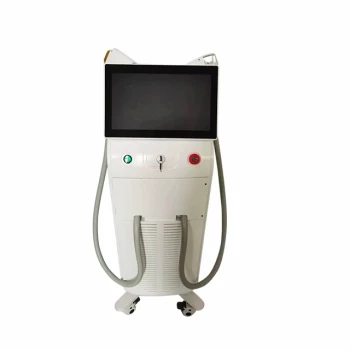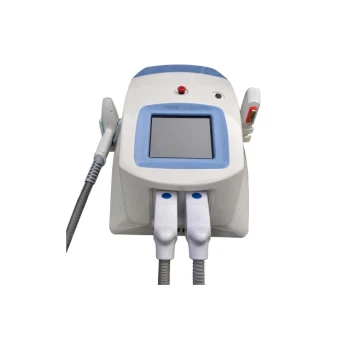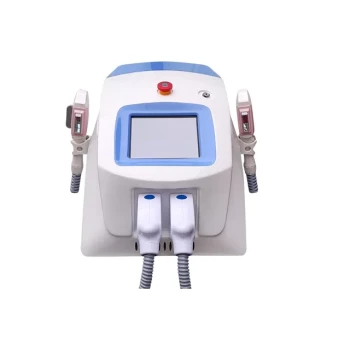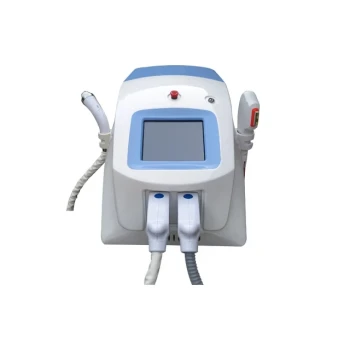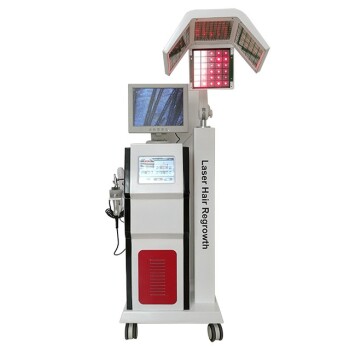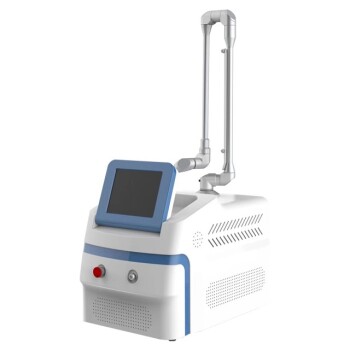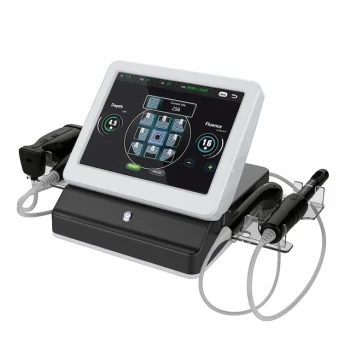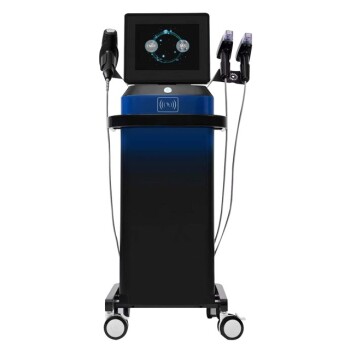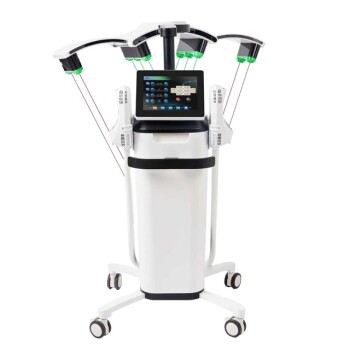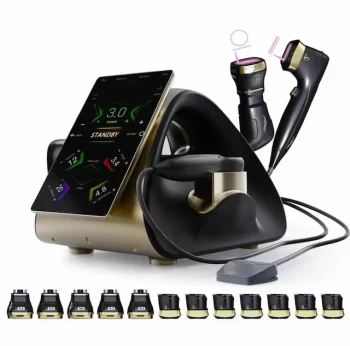In short, no. Laser hair removal is not designed to build collagen, and any claims that it does are a misunderstanding of how the technology works. The primary goal of this procedure is to destroy hair follicles, not to remodel the skin's deeper layers. While any heat applied to the skin can have minor, incidental effects, it is not a reliable or effective method for skin rejuvenation.
The fundamental difference lies in the target. Laser hair removal is optimized to destroy melanin in the hair follicle, while collagen-building lasers are engineered to heat water within the dermis to trigger a healing response. These are two distinct goals requiring two different tools.
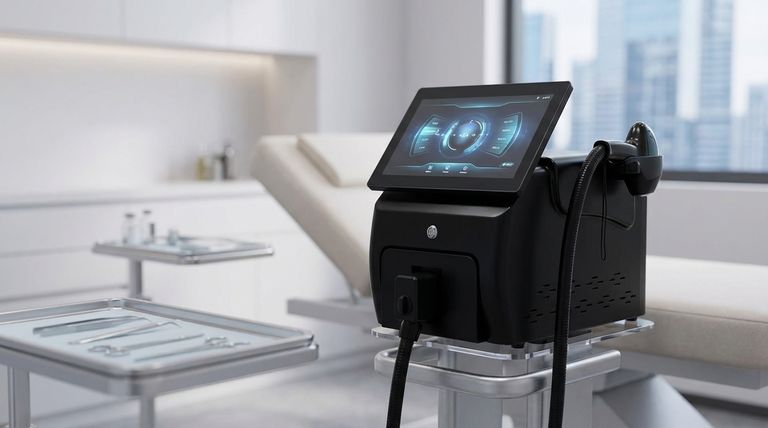
How Laser Hair Removal Actually Works
The Specific Target: Melanin
The energy from a laser hair removal device is specifically tuned to a wavelength that is absorbed by melanin, the pigment that gives hair its color.
This focused energy travels down the hair shaft into the follicle.
The Goal: Thermal Destruction
The absorbed light converts to heat, which damages or destroys the hair follicle. This prevents the follicle from producing hair in the future. The procedure's success is entirely dependent on this targeted destruction.
How Lasers Actually Stimulate Collagen
The Specific Target: Water
In contrast, laser skin rejuvenation treatments (like Fraxel or CO2 lasers) use a different wavelength of light. This wavelength is primarily absorbed by water, which is abundant in the skin's dermal layer.
The Goal: Controlled Thermal Injury
By heating the water in the dermis, the laser creates a controlled, microscopic thermal injury. This process intentionally triggers the body’s natural wound-healing cascade.
The Healing Response Creates Collagen
In response to this controlled "injury," the body floods the area with fibroblasts, which are cells that produce new collagen and elastin. This new collagen is what helps reduce wrinkles, tighten skin, and improve texture over time.
Why One Laser Can't Do Both Jobs Effectively
Different Wavelengths for Different Tasks
The specific wavelengths used for hair removal (like 755nm, 810nm, or 1064nm) are chosen for their high absorption by melanin, not water. Skin rejuvenation lasers (like 1550nm or 10,600nm) are chosen for the opposite reason. Using the wrong tool for the job is simply ineffective.
Different Energy Delivery Methods
Laser hair removal delivers a precise, powerful pulse to a very small target—the follicle. Collagen-building lasers often use a fractional pattern, treating microscopic columns of skin to stimulate a broader healing response across a larger area. The technique and intent are completely different.
The "Incidental Heating" Fallacy
Some may argue that the heat from laser hair removal incidentally warms the dermis, which could create a small amount of collagen. While technically possible, this effect is minimal, unpredictable, and entirely secondary. It is in no way comparable to the significant and reliable collagen production from a dedicated skin rejuvenation treatment. Relying on laser hair removal for anti-aging benefits is like expecting a candle to heat your entire house.
Making the Right Choice for Your Goal
To achieve your desired outcome, you must select the procedure designed specifically for that purpose. Confusing the capabilities of these advanced tools will only lead to disappointment.
- If your primary focus is permanent hair reduction: Pursue laser hair removal with a reputable, certified provider using the correct device for your skin and hair type.
- If your primary focus is building collagen to reduce wrinkles and tighten skin: You must seek out specific laser skin rejuvenation treatments designed to target the dermis and stimulate a healing response.
- If you want to achieve both goals: You will need two separate and distinct treatment plans, as no single device effectively accomplishes both tasks.
Ultimately, choosing the right laser technology is about matching the correct tool to your specific biological target.
Summary Table:
| Goal | Target | Laser Type | Key Outcome |
|---|---|---|---|
| Hair Removal | Melanin in Hair Follicle | Diode, Alexandrian, Nd:YAG | Permanent Hair Reduction |
| Collagen Building | Water in the Dermis | Fractional, CO2, Fraxel | Skin Tightening, Wrinkle Reduction |
Achieve Your Specific Aesthetic Goals with BELIS
Choosing the right technology is critical for successful results. At BELIS, we specialize in professional medical aesthetic equipment designed for precision and efficacy.
- For Clinics: Enhance your service offerings with dedicated devices for hair removal and skin rejuvenation, ensuring optimal outcomes for every client.
- For Premium Salons: Build client trust and satisfaction by using the correct, advanced technology for each specific treatment goal.
Let us help you equip your practice with the right tools. Contact our experts today for a personalized consultation and discover the BELIS difference.
Visual Guide
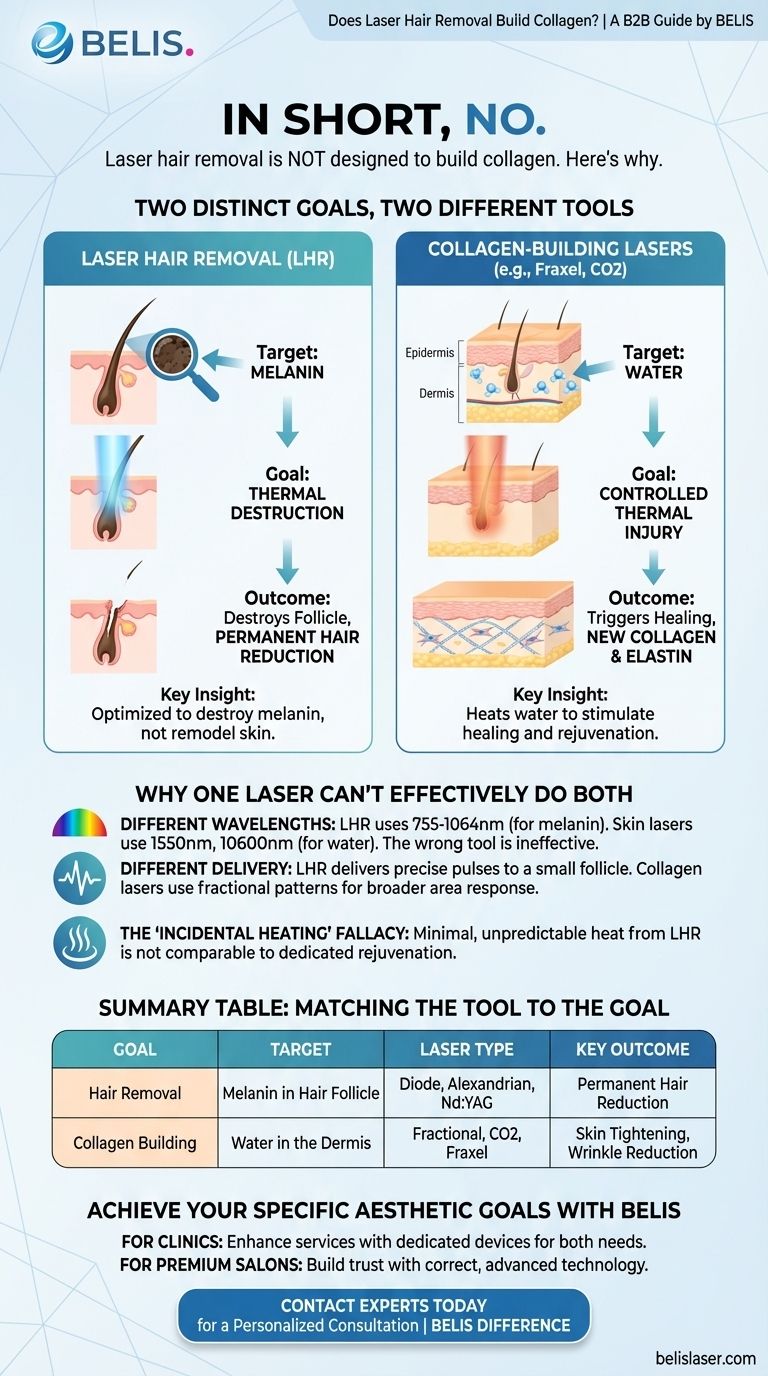
Related Products
- Trilaser Diode Hair Removal Machine for Beauty Clinic Use
- Diode Tri Laser Hair Removal Machine for Clinic Use
- Clinic Diode Laser Hair Removal Machine with SHR and Trilaser Technology
- Diode Laser SHR Trilaser Hair Removal Machine for Clinic Use
- Clinic Use IPL and SHR Hair Removal Machine with Nd Yag Laser Tattoo Removal
People Also Ask
- Can you use laser hair removal on intimate areas? Achieve Lasting Smoothness and Comfort
- Is it safe to do laser every 2 weeks? The Critical Timing for Safe & Effective Results
- How can I maximize my laser hair removal results? A Guide to Optimal Treatment and Safety
- Does laser hair removal destroy stem cells? The Key to Permanent Hair Reduction
- Who is not a good candidate for laser hair removal? Ensure Your Safety and Results

